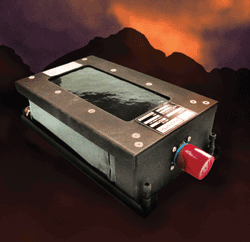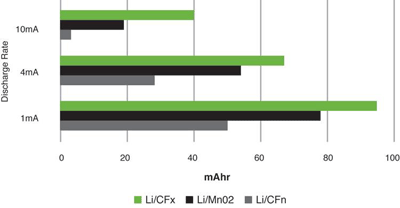Li-ion batteries take leading role in energy storage apps
BY JACOB MUTHU, International Battery, Allentown, PA
www.internationalbattery.com
Performance, cost, availability, and safety of energy storage systems can often change power system designs. As electric vehicles and the smart grids transform their respective industries, the role and significance of storage batteries continue to increase.
Beta testing confirms the value proposition and desirability of large-format prismatic lithium-ion (Li-ion) battery chemistry, footprint, rechargeability, and thermal properties when paired with battery management system (BMS) technology. These batteries are well suited for applications such as military vehicles on silent watch, backup power for NASA ground operations, renewable energy, micro grids, telecommunications, forklifts, tractors, medical devices, and marine systems with the goal of using smaller generators and less fossil fuel.
http://www.nxtbook.com/nxtbooks/hearst/projectpower_vol4no1/index.php?startid=5

Energy generated from a solar array is captured in a Li-ion -based energy storage system
High-energy Li batteries offer big bang for buck
BY SOL JACOBS, Tadiran Batteries, Port Washington, NY
www.tadiranbat.com
Recognizing that battery technology limitations would ultimately lead to bottlenecks in new product development, the U.S. DoD recently identified a critical need for a new generation of high-power, long-life batteries. The search for the ideal power management solution has led scientists at Tadiran to develop the TLM series, a family of high-power lithium metal oxide batteries that are currently in use in a variety of military and aerospace applications. This new generation of high-power lithium batteries is generating significant interest among mil/aero design engineers based on performance attributes such as exceptionally long shelf life, high-rate power, instantaneous activation, and high survivability in extreme environmental conditions.
http://www.nxtbook.com/nxtbooks/hearst/projectpower_vol4no1/index.php?startid=10

Mil/aero batteries must provide high-rate power, instantananeous activation, and high survivability in extreme environmental conditions
Primary lithium batteries
BY ERIC LIND, Contour
Energy Systems, Azusa, CA
www.contourenergy.com
The element lithium possesses fundamental properties that make it ideal for use as the anode in both primary and rechargeable batteries.
http://www.nxtbook.com/nxtbooks/hearst/projectpower_vol4no1/index.php?startid=15

These test results of available capacity at three different rates of discharge (to 2.0 V) for three different 2016 coin cells help quantify the carbon fluoride battery’s improvements in power density at low, moderate and high discharge rates
Batteries and power management come of age for all apps
Battery-powered devices and alternative-energy markets are combining to drive growth of power management products. Consumers everywhere are looking for longer battery life in their mobile devices, including cell phones, tablets, notebooks, and portable navigation devices. New design trends will likely emerge in power management ICs, boosting revenue among suppliers. Another factor driving expansion will be the growth in alternative energy markets, including solar, wind, the electrification of vehicles and the smart grid. IHS iSuppli research shows alternative energy being transformed from an emerging market in power management to a more mainstream segment in 2011, thus generating revenue growth for suppliers. Also anticipated in 2011 is a move toward greater integration in power ICs; suppliers with the technology to further integrate their chips will reap the greatest benefits in terms of revenue. For their part, some of the old legacy power suppliers are expected to radically change strategies to accommodate shifting market dynamics, according to IHS. Having grown less competitive and now being aggressively attacked by many smaller suppliers that deliver respectable designs at lower prices, legacy suppliers are likely to reorganize in order to counter the threats.
In this edition of the newsletter we provide three up-close looks at battery technology and how they can help you meet your design needs. The first article talks about Li-ion batteries and how water-based processing and large format form factors will expand the use of these batteries for many applications. The next article describes an overview of the battery chemistries commonly used in mil/aero applications and also reviews a family of high-power lithium metal oxide batteries that are currently in use in a variety of military and aerospace applications. The third article compares the basic properties of five different primary lithium batteries. It’s everything you need to help you make the right decision for your next battery-based design.
Paul O’Shea
For more on Project Power,
Advertisement
Learn more about Digi-Key





